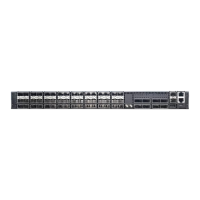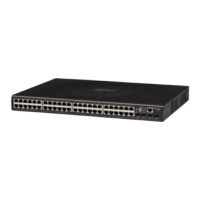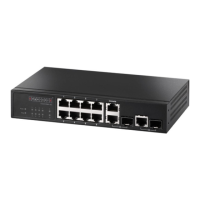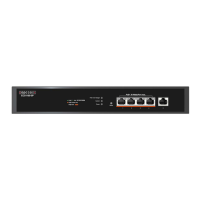Chapter 29
| IP Routing Commands
Open Shortest Path First (OSPFv2)
– 848 –
rip – Imports external routes learned through Routing Information Protocol
(RIP) into this routing domain.
static - Static routes will be imported into this Autonomous System.
metric-value - Metric assigned to all external routes for the specified
protocol. (Range: 0-16777214)
type-value
1 - Type 1 external route
2 - Type 2 external route (default) - Routers do not add internal route
metric to external route metric.
tag-value - A tag placed in the AS-external LSA to identify a specific external
routing domain, or to pass additional information between routers.
(Range: 0-4294967295)
Command Mode
Router Configuration
Default Setting
redistribution - none
metric-value - 10
type-metric - 2
Command Usage
◆ This command is used to import routes learned from other routing protocols
into the OSPF domain, and to generate AS-external-LSAs.
◆ When you redistribute external routes into an OSPF autonomous system (AS),
the router automatically becomes an autonomous system boundary router
(ASBR). If the redistribute command is used in conjunction with the default-
information originate command to generate a “default” external route into the
AS, the metric value specified in this command supersedes the metric specified
in the default-information originate command.
◆ Metric type specifies the way to advertise routes to destinations outside the AS
through External LSAs. When a Type 1 LSA is received by a router, it adds the
internal cost to the external route metric. In other words, the cost of the route
from any router within the AS is equal to the cost associated with reaching the
advertising ASBR, plus the cost of the external route. When a Type 2 LSA is
received by a router, it only uses the external route metric to determine route
cost.
◆ A tag can be used to distinguish between routes learned from different
external autonomous systems (other routing protocols). For example, if there
are two ASBRs in a routing domain: A and B. ASBR A can be configured to
redistribute routes learned from BGP domain 1 (identified by tag 1) and ASBR B
can redistribute routes learned from BGP domain 2 (identified by tag 2).

